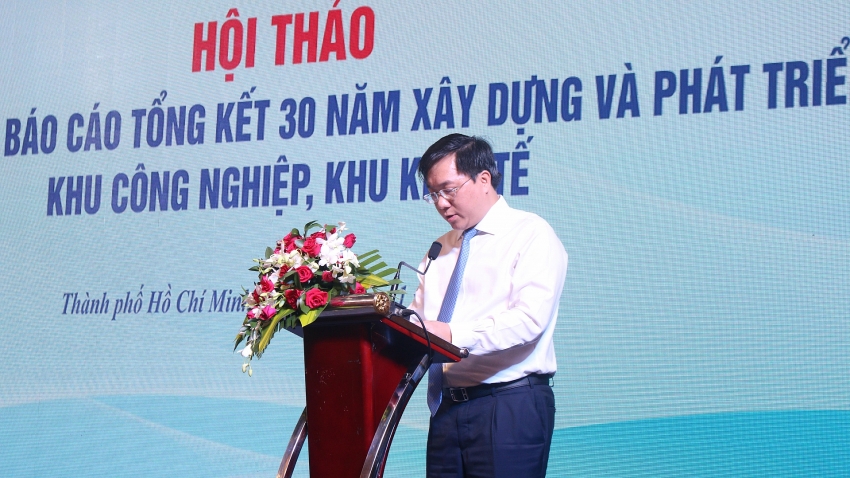According to Tran Duy Dong, Deputy Minister of Planning and Investment, the development of industrial zones (IZs) and economic zones (EZs) has positively contributed to improving the institution and the business investment environment, as well as encouraging the renewal of administrative procedures.

The first limitation exposed is that the master plan to develop IZs and EZs has not aligned with the development targets of their respective local authorities.However, the implementation of regulations related to the development of IZs and EZs has revealed certain limitations.
The concentration of many IZs and EZs in one hub or along major national highways has put pressure on the technical and social infrastructure system of the local authorities.
Moreover, IZs and EZs have not been attractive enough for tenants, including with unsynchronised development inside and outside of the zones.
“Vietnam is entering a new phase and it requires comprehensive and strong reforms to become a developed and modern country, overcoming the middle-income trap and avoiding being left behind by other countries in the region. To do this, we have to continuously innovate and improve institutions, policies, and adjust the goals and orientations for the development of IZs and EZs to adapt to the new context, contributing to the implementation of development strategies and the development of the country,” Dong said.
Experts and investors have assessed the shortcomings and limitations on the development of IZs and EZs in recent years and the basic causes, including issues related to the state management of IZs and EZs (policy making, construction planning, and legal framework for the development of IZs and Ezs, the coordination between ministries, branches and localities and the competitiveness in attracting investment of IZs, EZs of Vietnam compared to other countries).
They have also proposed practical and breakthrough solutions to build and develop IZs and EZs in the coming time.
Based on the content of the workshop, the Ministry of Planning and Investment will prepare a draft report on 30 years of construction and development of IZs and Ezs, formulating a law or resolution for submission to the prime minister for consideration.
Up to now, the country has established 369 IZs (including IZs located in economic zones) in 61 out of 63 provinces and cities, with a total area of nearly 114 thousand hectares, 26 border gate EZs established in 21 provinces and cities with an area of about 766,000ha and 18 coastal EZs established in 17 provinces and cities with a total land and water surface area of nearly 853,000ha.
IZs and EZs have made positive contributions to the growth and development achievements of Vietnam, through the strong attraction of foreign direct investment, adding an important capital source for the total social investment capital.
The implemented investment capital, including investment capital for technical infrastructure of IZs and EZs accounted for about 27.7 per cent of the total social investment in the period of 2016-2019.
In 2016-2019, the annual average export value accounts for over 55 per cent of the country’s total export turnover.
Also in this period, EZs and IZs had contributed more than VND400 trillion ($17.3 billion) to the state budget. This accounted for 60 per cent of the total local budgetary revenues of some provinces such as Quang Nam, Quang Ngai, and Haiphong, creating jobs for more than 3.8 million direct workers, accounting for about 7 per cent of the country’s labour force.

